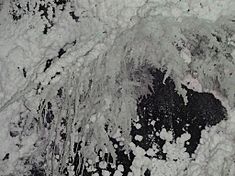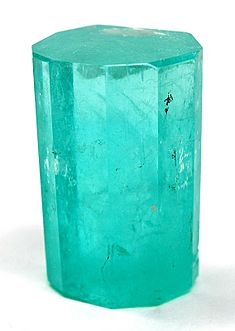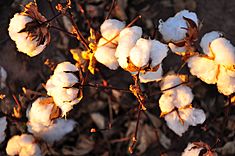Muisca economy facts for kids
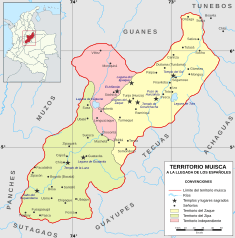
The Muisca were an ancient people who lived in the high mountains of central Colombia. They had a very rich economy and were known as skilled traders. When the Spanish explorers arrived, they were very interested in the Muisca's valuable resources like gold, emeralds, and salt.
The Muisca could provide for themselves thanks to their clever farming methods, like using raised garden beds. They had a good trading system that brought valuable items like gold, colorful feathers, and special plants to everyone.
Markets were held often in different Muisca towns. Big markets were also set up during festivals, where traders from far away came to exchange goods with the Muisca.
Besides farming, the Muisca were great at making different crafts. They used raw materials they traded with other groups. Their gold and tumbaga (a mix of gold and copper) objects were very famous. Muisca women made cotton blankets, clothes, and nets. These were traded for valuable goods, tropical fruits, and even used as money. The Muisca were special in South America because they had real gold coins called tejuelos.
Mining was also a big part of their economy. They were even called "The Salt People" because of their salt mines in Zipaquirá, Nemocón, and Tausa. Like their neighbors, the Muzo (who were called "The Emerald People"), the Muisca mined emeralds in their lands, especially in Somondoco. They also found carbon (coal) and used it for cooking and making salt and gold items.
Many early Spanish writers like Pedro Simón wrote about the Muisca economy. However, some experts today believe these writings might have been biased or misunderstood, especially since the Spanish were mainly looking for gold. Later research by people like Carl Henrik Langebaek has helped us understand the Muisca economy better.
Contents
Who Were the Muisca?
Before the Spanish arrived, the Muisca lived in the central part of what is now Colombia. They were organized into a loose group of leaders. The main leaders were the zipa in the south (around Bacatá) and the zaque in the north (around Hunza). Other important leaders included the iraca priest in Sugamuxi and the Tundama of Tundama. The Muisca spoke a language called Muysccubun.
Unlike the Maya, Aztecs, and Inca, the Muisca did not build huge stone buildings. Their towns were smaller, with round houses made of wood and clay. These houses were built around a central market square, with the leader's house in the middle. Roads connected their towns to each other and to nearby groups like the Guane and Lache.
The Muisca believed in many gods, and their religion was closely linked to nature. They understood the stars and created a complex calendar based on the moon and sun. This calendar helped them know when to plant, harvest, and hold their many festivals. During festivals, they sang, danced, played music, and drank a lot of their traditional drink, chicha.
The Muisca also mummified important people in their community. These mummies were not buried but were displayed in their temples or caves. Sometimes, they even carried them into battles to scare their enemies!
Their beautiful art is one of the most famous things left from their culture. Many of their living spaces and temples were destroyed by the Spanish. A great example of their gold work is the Muisca raft, which you can see along with other gold, tumbaga, ceramic, and cotton objects at the Museo del Oro in Bogotá.
How the Muisca Economy Worked
Spanish records show that the Muisca had a very advanced economy with many ways of earning a living. The main part of their economy was farming on fertile plains and valleys. Leaders did not directly control farming, but extra food was shared among them.
Experts often look at how specialized a society's crafts are to understand its economy. The Muisca were very skilled at making things, which gave them an advantage over other groups. Some early Spanish writers might have exaggerated the Muisca's wealth because they were looking for gold.
All the Spanish writers from the 1500s agreed that the Muisca were great at trading. One writer, Juan de los Barrios, said that Muisca men were excellent traders, calling them "so sharp in their dealings that no other Indian could equal them." The Spanish also wrote that the Muisca paid "tributes" to other leaders. However, some experts now think these "tributes" might have been misunderstood by the Spanish and were actually gifts or presentations.
Farming and Food
Farming was the main way the Muisca made money. They could usually grow enough food for themselves because the soil in their region was very fertile. This fertility came from ancient lake beds that dried up, leaving rich soil. The Muisca used these flat, fertile lands to grow many different crops, including maize (corn), potatoes, beans, and quinoa. Volcanic ash also helped make the soil even better.
To make sure they always had enough food, the Muisca watered their lands and grew crops in different climate zones. They had farmlands on fertile plains and on higher mountain slopes. Potatoes and quinoa grew well in high places, while corn and coca grew in warmer areas. In the lowest, warmest valleys, they grew yuca, pineapples, tobacco, and cotton. They also grew squash, oca, peppers, and ullucus. Any extra food they grew was traded at the many markets.
In some northern areas, the varied landscape allowed them to grow cotton and yuca. The Muisca built irrigation canals and raised garden beds to water their crops. This helped them grow a wide variety of foods. In warmer areas, they could even harvest corn twice a year, while in cooler places like the Bogotá savanna, they could only harvest once.
Hunting and Fishing
The Muisca got most of their meat and fish by hunting and fishing. The many rivers and lakes in their region, especially Lake Fúquene and Lake Tota, provided plenty of fish. Muisca men usually did the hunting and fishing, while Muisca women focused on farming, making clothes, and pottery. They also raised guinea pigs for food, a practice that started long before the Spanish arrived.
Mining for Resources
The Muisca lands had many valuable minerals. They mainly got salt from mines in Zipaquirá, Nemocón, and Tausa. They mined emeralds in Somondoco, Coscuez, and Ubalá. Carbon (coal) was mined in Sugamuxi and Tópaga. They also mined copper in some areas. Gold and silver were not common in Muisca lands, so they usually got these metals through trade.
To mine emeralds, they used long wooden poles. During the rainy season, they dug holes next to rocks that contained emeralds. The rain would wash the emeralds into these holes, making them easy to collect. Coal was mined in a similar way, using pointed wooden sticks.
Making Goods
Besides farming and mining, making goods was a very important part of the Muisca economy. They got raw materials for gold and tumbaga objects, cotton clothes, and pottery by trading with neighbors or by finding them in their own lands.
Pottery
The Muisca were famous for their pottery. Many pottery workshops were located near rivers and lakes, especially around Lake Fúquene. The Spanish even called the people from this area "Pottery People."
Muisca women made different kinds of pottery, including vases, cups, bowls, pans, large pots for salt, and jars with handles. They decorated their pots with colorful paints and designs of snakes or frogs.
Gold and Tumbaga Work
The Muisca were most famous for their gold work. Most of the ancient objects found today are made of gold and tumbaga (a mix of gold, copper, and silver). Since gold wasn't common in their own lands, they got it through trade. The main place for gold working was Guatavita, near the sacred Lake Guatavita.
They made many beautiful things from these precious metals, including crowns, nose rings, necklaces, earrings, small figures called tunjos (used as offerings), and even coins called tejuelos. To make these objects, they used melting pots and ovens. They would pour the melted tumbaga into hot stone molds filled with beeswax. The heat would melt the wax, leaving a space for the metal to fill, creating detailed figures.
Weaving Cotton
Muisca women also did the weaving. They used cotton grown in warmer areas, which they traded for salt or pottery. They used wooden spindles and clay rolls to weave braided or tied cloths and blankets. They also made nets from cotton. Needles were made of gold or bone. The cloths were painted black, red, and other colors using natural dyes from plants.
Trading Goods
An early writer, Juan de Castellanos, said the Muisca were "more traders than fighters." They traded using salt, small cotton cloths, larger blankets, and pottery. They also used flat gold disks, called tejuelo, as coins. These were plain round disks, about 1 to 5 centimeters wide. This system of using coins was unique among South American native peoples.
Markets were held every four days in towns like Bacatá, Hunza, Zipaquirá, and Turmequé. Other important market towns included Chocontá and Somondoco. Some records say markets were held every eight days.
Sorocotá, along the Suárez River, was a major market town for trading with the Guane people. Here, gold from other areas was traded for emeralds from Somondoco. Tropical fruits that didn't grow in the high mountains were also sold here. The town of La Tora (now Barrancabermeja) was important for trade with the Caribbean coast. It was the main source for valuable marine snail shells, which the Tairona people decorated with gold.
Trade with people from the eastern plains (Llanos Orientales) happened along special trade routes across the mountains. They used ropes to cross rivers. Products like yopo (a plant used for rituals), beeswax, honey, cotton, fish, and fruits were traded with the Guayupe, Achagua, and Tegua peoples. They also traded for colorful feathers from exotic birds, which the Muisca used for their crowns, and animal skins like jaguar skins for their leaders' hats.
Cotton, which was important for making clothes for the cool mountain climate, came from northern and eastern regions. The northern trade was centered around Sugamuxi and Tundama. The eastern trade was mainly at markets in Teusacá, Chocontá, and Suesca. Coca trade was strong in the north around Motavita and Soatá. Traders from Paipa would travel to Soatá to buy coca, which they then sold in Tunja.
At certain times, according to the Muisca calendar, they held bigger markets during festivals. People from even farther away would come to trade. One of the most important of these big markets was near the Magdalena River, in the lands of the Panche and Muzo people. Here, the Muisca got gold and tropical fruits like avocadoes, guavas, and soursops. They traded these for blankets, emeralds, and salt. Other large festival markets were held near the Saldaña River and Neiva.
Changes After the Spanish Arrived
Soon after the Spanish arrived, they set up a system where Muisca leaders had to pay "tributes" to the Spanish every six months. The Muisca's self-sufficient economy quickly changed. They were forced to work on farms and in mines for the Spanish. The Spanish also brought slaves from Africa to work alongside the Muisca.
The Spanish used the Muisca's trading system to avoid paying taxes to the Spanish crown. The Muisca would trade gold for cotton, salt, emeralds, and blankets, and then these products were used for tribute instead of gold. This meant the Spanish didn't have to pay a tax on the gold they got. By 1558, just 20 years after the Spanish took over, it was reported that over 11,000 pesos were lost each year in unpaid taxes because of this trading system.
The Muisca Legacy Today
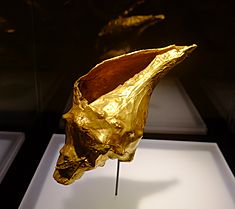
Today, you can still see the influence of the Muisca economy in central Colombia. Many markets continue to thrive, and emerald mining is still very important (Colombia produces most of the world's finest emeralds). The making of clothes and pottery also continues. You can see collections of Muisca economic products in the famous Gold Museum in Bogotá, the Archaeology Museum of Sogamoso, and other museums.



